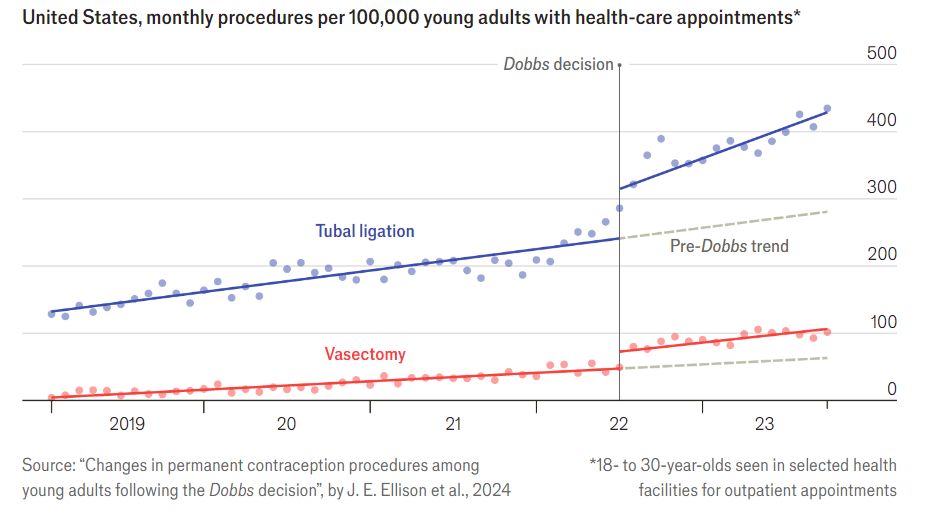Imagine recording and storing everything you read
Ray-Ban Meta smart glasses just got a massive Multimodal upgrade – Meta AI with Vision
It doesn't just take speech input, it can now answer questions about what you are seeing.
Here are 8 features that is now possible
1. Ask about what you are seeing pic.twitter.com/IJQ3WuZMAJ
— Min Choi (@minchoi) April 24, 2024
What can LLMs never do?
By Rohit Krishnan, he and I are both interested in the question of what LLMs cannot do, and why. Here is one excerpt:
It might be best to say that LLMs demonstrate incredible intuition but limited intelligence. It can answer almost any question that can be answered in one intuitive pass. And given sufficient training data and enough iterations, it can work up to a facsimile of reasoned intelligence.
The fact that adding an RNN type linkage seems to make a little difference though by no means enough to overcome the problem, at least in the toy models, is an indication in this direction. But it’s not enough to solve the problem.
In other words, there’s a “goal drift” where as more steps are added the overall system starts doing the wrong things. As contexts increase, even given previous history of conversations, LLMs have difficulty figuring out where to focus and what the goal actually is. Attention isn’t precise enough for many problems.
A closer answer here is that neural networks can learn all sorts of irregular patterns once you add an external memory.
And:
In LLMs as in humans, context is that which is scarce.
Interesting throughout.
What is the proper policy toward tourists?
That is the topic of my latest Bloomberg column, basically you should charge them fees rather than discourage them through other means> Here is one excerpt:
By this reasoning, the Japanese decision to raise bullet train prices for tourists is exactly the right approach. In the meantime, the Japanese government, which faces high pension costs, has more money at its disposal. There is no need to resent or otherwise restrict the tourists at all, and indeed I have found the Japanese people to be extremely gracious and helpful to foreigners. Higher prices for tourist train tickets will make it easier for them to stay this way.
If there is any problem with Venice’s five-euros-a-day charge, it is that it is not nearly high enough, given crowding and accumulated wear and tear on the city. How about 50 euros? But with a smile!
The same goes for the bus in Barcelona: Why not raise the fare? Just for tourists. It is easy enough to (partially) enforce this differential treatment with spot checks on the bus line. An alternative or possible complement to this plan is to run more buses to the park, to alleviate congestion. Higher fees for tourists can help pay for them.
Here is an interesting problem:
Amsterdam has a more difficult challenge. Barcelona and Venice have some unique attractions and sites that can be priced at higher levels, with exclusion applied to non-payers. In contrast, for many Amsterdam tourists the attractions are booze, pot and sex, all of which have prices set in basically competitive markets. I’m all for more expensive tickets to the Rijksmuseum, but that might not make much of a difference to Amsterdam’s “party tourism” problem.
Worth a ponder.
More Tuesday links
1. AI Camera turns your images into poetry.
2. Highly capable model locally on your phone.
3. Clara Piano reviews GOAT. “Perhaps, in his emphasis on the importance of ideas, Cowen reveals that he is ultimately a Simonian. After all, the human mind is the ultimate resource.”
4. Market liberalism, Chinese style.
5. Red flags for improper judicial conduct.
6. Data on the economics of bookselling, designed to dissuade would-be authors.
Four Thousand Years of Egyptian Women Pictured
 In an excellent, deep-dive Alice Evans looks at patriarchy in Egypt using pictures drawn from four thousand years of history. Here are three examples.
In an excellent, deep-dive Alice Evans looks at patriarchy in Egypt using pictures drawn from four thousand years of history. Here are three examples.
A wealthy woman, shown at right circa 116 CE. Unveiled, immodest, looking out at the world. A person to be reckoned with.
After the Arab conquests, pictures of people in general disappear, and there are no books written by women. With the dawn of photography in the 19th century we see (at left) what was probably typical, veiled women, and very few women on the street.

In the 1950s and 1970s we see a remarkable revitalization and liberalization noted most evidently in advertisements (advertisers being careful not to offend). Note the bare legs and the fact that many advertisements are directed at women (below)

This period culminates in a remarkable video unearthed by Evans of Nasser in 1958 openly laughing at the idea that women should or could be required to veil in public. Worth watching.
In the 1980s, however, it all ends.
Egyptians who came of age in the 1950s and ‘60s experienced national independence, social mobility and new economic opportunities. By the 1980s, economic progress was grinding down. Egypt’s purchasing power was plummeting. Middle class families could no longer afford basic goods, nor could the state provide.
As observed by Galal Amin,
“When the economy started to slacken in the early 1980s, accompanied by the fall in oil prices and the resulting decline in work opportunities in the Gulf, many of the aspirations built up in the 1970s were suddenly seen to be unrealistic and intense feelings of frustration followed”.
‘Western modernisation’ became discredited by economic stagnation and defeat by Israel. In Egypt, clerics equated modernity with a rejection of Islam and declared the economic and military failures of the state to be punishments for aping the West. Islamic preachers called on men to restore order and piety (i.e., female seclusion). Frustrated graduates, struggling to find white collar work, found solace in religion, whilst many ordinary people turned to the Muslim Brotherhood for social services and righteous purpose.
That’s just a brief look at a much longer and fascinating post.
Tuesday assorted links
1. A literalist reading of Civil War.
2. Why it is so hard to get a reservation nowadays (New Yorker).
3. “There are currently 682 #AI-related bills (581 of them in the states) on the @MultiStateAssoc legislative tracker.” Link here.
4. The econometrics of social media and mental health. And more on the same. A good piece.
5. Esther Duflo calls for $500 billion in climate reparations (FT).
Hiring discrimination sentences to ponder
Several common measures — like employing a chief diversity officer, offering diversity training or having a diverse board — were not correlated with decreased discrimination in entry-level hiring, the researchers found.
But one thing strongly predicted less discrimination: a centralized H.R. operation.
The researchers recorded the voice mail messages that the fake applicants received. When a company’s calls came from fewer individual phone numbers, suggesting that they were originating from a central office, there tended to be less bias. When they came from individual hiring managers at local stores or warehouses, there was more. These messages often sounded frantic and informal, asking if an applicant could start the next day, for example.
“That’s when implicit biases kick in,” Professor Kline said. A more formalized hiring process helps overcome this, he said: “Just thinking about things, which steps to take, having to run something by someone for approval, can be quite important in mitigating bias.”
Seasonality and the Invention of Agriculture
Forthcoming from the QJE, here is a new paper by Andrea Matanga:
The Neolithic revolution saw the independent development of agriculture among at least seven unconnected hunter-gatherer populations. I propose that the rapid spread of agricultural techniques resulted from increased climatic seasonality causing hunter-gatherers to adopt a sedentary lifestyle and store food for the season of scarcity. Their newfound sedentary lifestyle and storage habits facilitated the invention of agriculture. I present a model and support it with global climate data and Neolithic adoption dates, showing that higher seasonality increased the likelihood of agriculture’s invention and its speed of adoption by neighbors. This study suggests that seasonality patterns played a dominant role in determining our species’ transition to farming.
Here are various less gated copies. Via Nicanor Angle.
Monday assorted links
1. Are Indian women stronger relative supporters of Modi?
2. Apple to build on-device AI?
3. The remarkable economic recovery of Sri Lanka?.
4. “UK alcohol-related deaths up one-third on pre-pandemic levels…” (FT)
5. New Cass Sunstein book on campus free speech.
6. The Straussian approach to the new Taylor Swift.
7. Macro Musings podcast from Mercatus is now powered by AI.
Deregulate our universities
Take a look at how the number of federal regulations and policies governing research at universities has dramatically increased over the years.
This adding an enormous cost of doing research.
(Source COGR) pic.twitter.com/ezqAsLUIIj
— Denis Wirtz (@deniswirtz) April 20, 2024
Via Matt Yglesias.
Tying the Knot

Dobbs, of course, was the Supreme Court decision saying that the constitution does not provide a right to abortion, thus leading to restrictions on abortion in many states. The pictures is from The Economist, the original paper is here.
Arguments that (almost) everyone hates
These are usually worth pondering, as at the very least you will learn something. Here is a hate-worthy paragraph from an earlier Bloomberg column of mine:
…note that higher real estate prices, to the extent they result from immigrant demands, largely translate into capital gains for homeowners — most of whom are native-born. To be sure, the higher home prices may be bad for many younger Canadians, who may be locked out of housing markets, but eventually many of them will inherit high-valued homes from their parents.
Yet it is true. “Immigrants pushing up home prices” should not be a major worry, though it does create some distributional problems (is this the main way to induce conservatives to worry about distributional problems?).
With some effort maybe one can make the dislike of the argument stronger. Often I hear “Oh, it’s good if we taken in lots of immigrants. But the more that come, the more we need YIMBY to house them at reasonable expense.”
Maybe! But let’s not forget the terms of trade models for international exchanges. If one of our export industries is “selling homes to arriving foreigners,” you might want your sellers to collude, restrict output, and raise prices to the foreigners. At least if you are maximizing the welfare of initial natives.
And that is precisely what NIMBY policies do, namely by enforcing a kind of implicit collusion, they force the arrivals to pay more for homes. Pay more to the natives, that is.
Raise your hand if you’re against capital gains!
Of course the cosmopolitans amongst us can resolve these issues rather easily.
Guinea pig questions
If someone demographically normal and not especially at-risk wants to serve as a guinea pig, what is the optimal allocation of that resource?
Is there any formal discussion of this question? I know they say “there is always an Effective Altruism blog post,” but is there?
Mostly I have medicine and medical experimentation in mind, but I can imagine other answers as well, such as “trying to leap forty flaming cars with a motorcycle.” Though I doubt that one will end up as the winner. In any case, I am assuming away legal constraints. Where can you volunteer as a guinea pig for the highest social value?
Sunday assorted links
1. Rasheed Griffith reggae playlist.
2. Poland got rid of compulsory homework for grade school.
3. Suicide rate trends for German teen females.
4. Important job ad for finding and cultivating talent in Brazil, no Portuguese required.
6. Claims about microwave missiles, speculative.
The game theory of the final round of the Candidates
The amazing Gukesh (17 years old!) is half a point ahead with one round remaining today. Three players — Nakamura, Caruana, and Nepo — trail him by half a point. Naka is playing Gukesh, and of course Naka will try to win. But what about Caruana vs. Nepo? Yes, each must try to win (no real reward for second place), but which openings should they aim for? You might think they both will steer the game in the direction of freewheeling, risky openings. Game theory, however, points one’s attention in a different direction. What if one of the two players opts for something truly drawish, say like the Petroff or (these days) the Berlin, or the Slav exchange variation? Then the other player really needs to try to win, and to take some crazy chances in what is otherwise a quite even position. Why not precommit to “drawish,” knowing the other player will have to go to extreme lengths to rebel against that?
Of course game theory probably is wrong in this case, but is this such a crazy notion? I’ll guess we’ll find out at about 2:45 EST today.